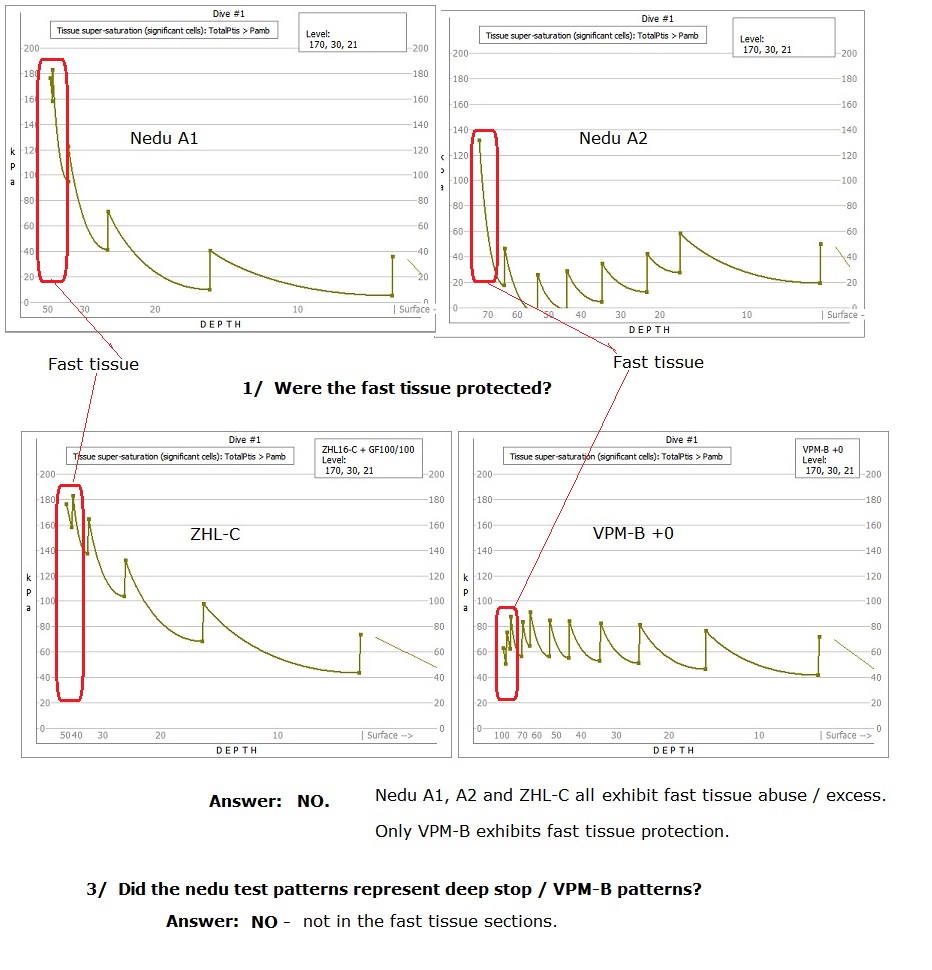All models including VPM and RGBM, and GF addition to ZHL, demand scrutiny. These in particular, because
(1) Unlike many other models and tables, their parameters were not calibrated with controlled experiments to minimize DCS risk, but were just set so that their runtime is similar to older methods and the curves look somehow familiar. If you use such an uncalibrated model with no experimental link to DCS risk, then you might as well just guess a runtime, take a paint program and just draw a curve that you feel looks right, and dive it.
(2) It's conspicuous how these uncalibrated and untested models were and still are pushed commercially with dive planning software and licensing to dive computer vendors. They promote an unhealthy habit of deep stopping among technical divers.





